How To Measure A Toilet Seat (In a Few Easy Steps)
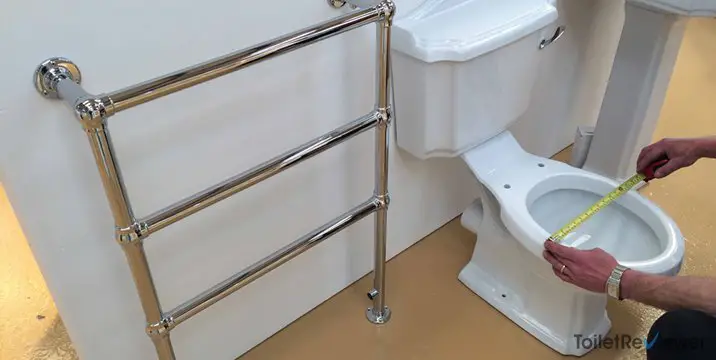
We need new toilet seats for a variety of reasons. Toilet seats break, chip and get wiggly and need to be replaced.
Knowing how to measure your toilet is the first and most important step in buying a new toilet seat. Toilets come in all sizes and shapes including round, elongated, or extended and knowing the difference is vital.
If you get the wrong seat size, most retailers won’t take returns because of hygienic reasons. So, getting the measurements right is necessary.
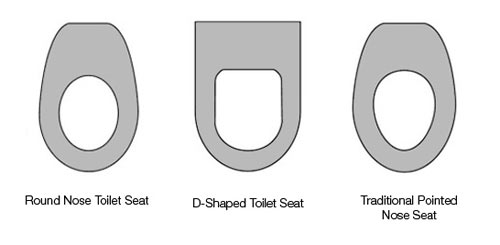 Today’s modern toilets come in a wide range of styles and can vary by shape.
Today’s modern toilets come in a wide range of styles and can vary by shape.
Not only do you find different shapes but a huge variety of sizes from around 13.75-inches to 19.7 inches.
This means there’s not a standard seat size which makes finding the right one difficult at times.
These are the most common shapes of toilet bowls. There are other shapes, but usually, you must buy the seat from the manufacturer or a specialty building store.
In this article, we discuss round and elongated measurements since the other seats are less common.
When measuring for a new toilet seat lid, it’s a good idea to consider the seat options and materials available.
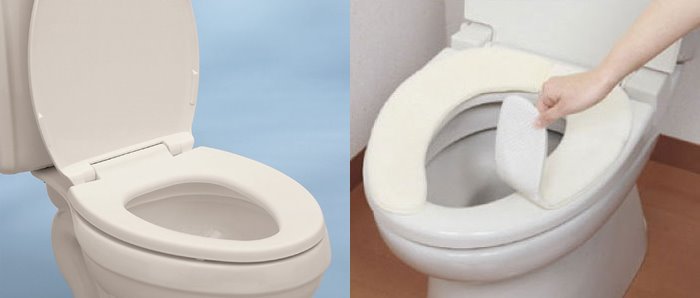 Most toilet seats today come in two seat options, standard close and soft close.
Most toilet seats today come in two seat options, standard close and soft close.
Standard close, as you might guess, means you manually close the seat all the way down.
A soft close seat has a spring mechanism that slowly lowers the seat with just a gentle push. Soft-close means you don’t get the usual lid slamming and loud clatter found with manual close seats. Bidet toilet seats are a good example of soft-close toilets.
However, you must treat the soft close seat and its spring mechanism with care. The seat spring gets easily damaged if you force the seat down instead of letting it close on its own.
While careful closing might not be easy with children in the house, it does keep little fingers from being smashed.
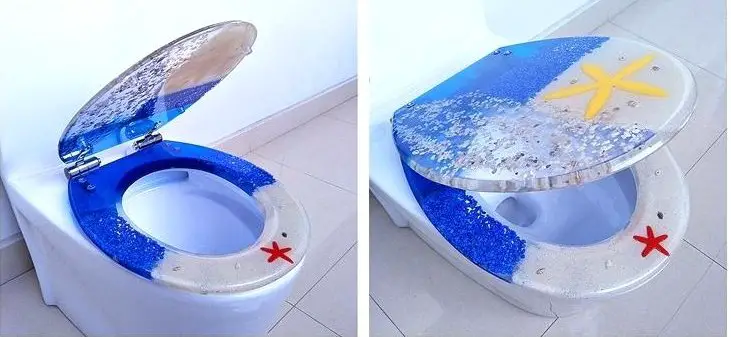 When it comes to toilet seat materials you have two choices—plastic or wood.
When it comes to toilet seat materials you have two choices—plastic or wood.
Plastic toilet seats are the most popular because of the wide range of shapes, seat durability, and the low price.
The three plastic materials used for toilet seats are:
Made of resin powder and hardener, the thermoset is made by being compressed into a mold.
As it gets heated during manufacturing, the thermoset gets stronger. Thermoset is an easy to clean material that doesn’t scratch.
A strong composite blend plastic molded product that can resemble stone or metal. In the case of toilet seats, the resin is molded see-through with objects, coloring, or designs inside.
This type of seat consists of resin injected into a mold. When made of thermoplastic, toilet seats are unbreakable, but still scratch. Types of Thermoplastic include polypropylene or PP plastic and ABS plastic injection mold.
While wooden seats are a more traditional option, they are not as durable as the plastic varieties. Wooden seats require a disinfect to clean and they easily scratch. The wood seats come in a wide variety of colors and finishes.
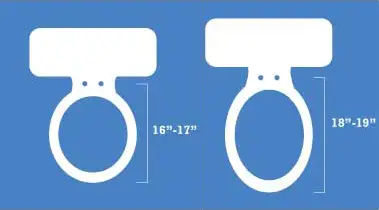 First, you need to determine whether you have an elongated or round bowl. You can’t always tell the shape from just looking at the bowl.
First, you need to determine whether you have an elongated or round bowl. You can’t always tell the shape from just looking at the bowl.
Start by looking at the toilet bowl with the seat off. You’ll see two holes at the rear of the toilet bowl. This is the first measurement you will take.
Using a tape measure, measure the distance between the two holes at the back of the bowl. This is where the toilet seat bolts to the bowl. The standard measurement of most toilets between the back holes is 5 ½ -inches.
For the bowl width, start at the widest part of the toilet bowl and measure from edge to edge. Most standard bowl measurements are around 14-inches to 14 ½-inches.
Place the end of the measuring tape on the front edge of the bowl. Measure from the front to the back bolt holes. A round bowl has a measurement of 16-inches to 17-inches.
Starting at the center front edge of the bowl, measure from the bowl’s front to the back bolt holes. Elongated bowls measure between 18-inches and 19-inches.
When measuring for a new toilet seat, make sure you do so accurately. Most retailers don’t take returns due to hygienic concerns.
Also, take care when removing the old lid and installing the new lid. Porcelain toilets scratch easily and overtightening bolts can crack the bolt hole housing.
Finally, check out our review guide about toilet seat risers for individuals with mobility issues.